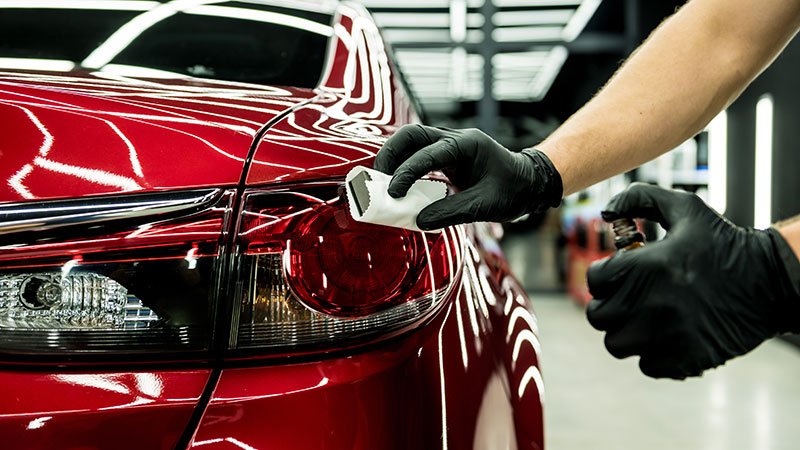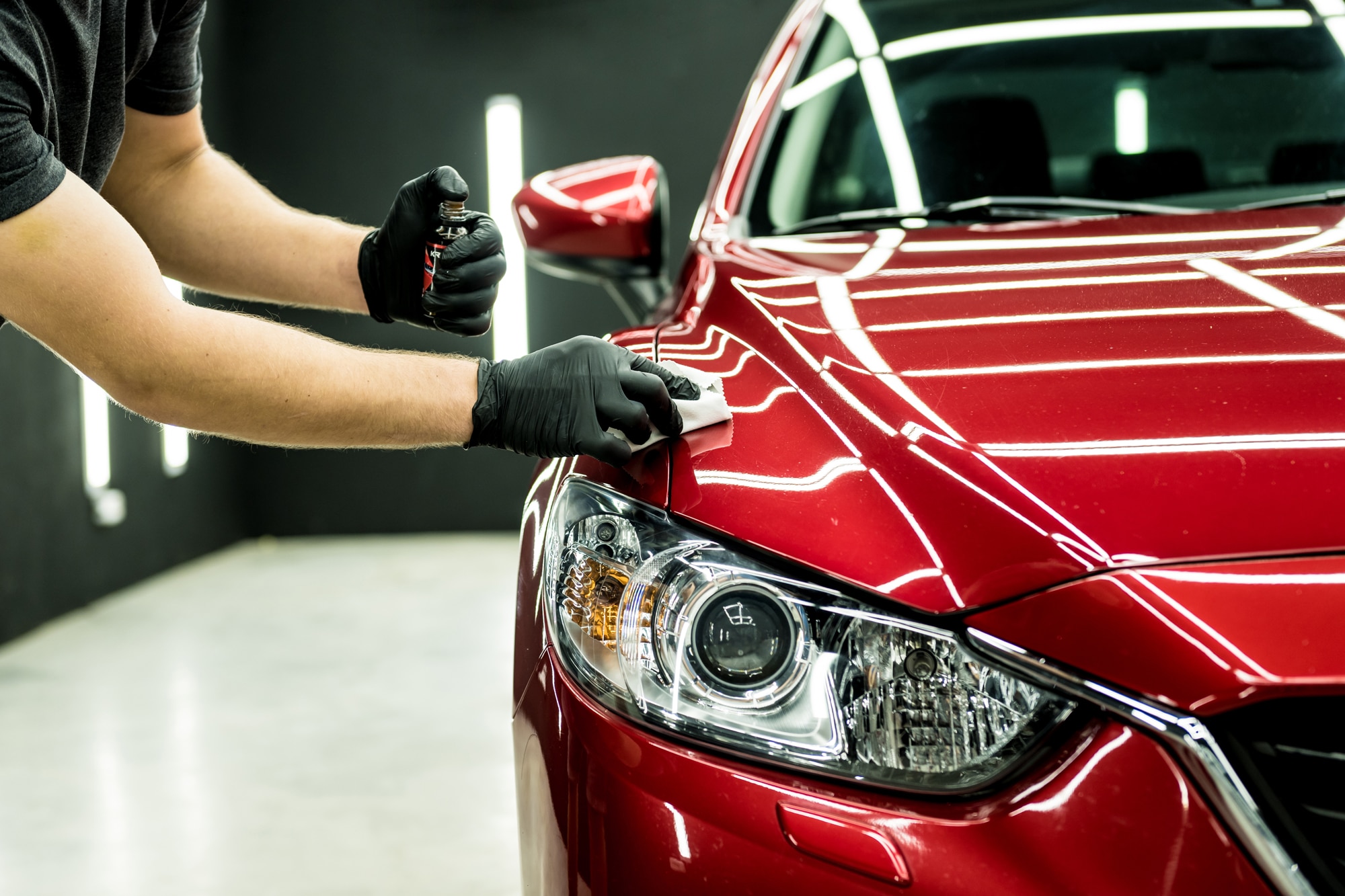Why Ceramic Finish Is the Ultimate Option for a Flawless End Up
Ceramic covering has actually emerged as a leading solution for those seeking a perfect finish for their vehicles, many thanks to its remarkable durability and protective features. This sophisticated fluid polymer not just bonds seamlessly with manufacturing facility paint yet also uses a formidable obstacle versus common risks such as scratches, UV rays, and ecological contaminants. Its hydrophobic properties simplify maintenance while improving visual appeal. Understanding just how this technology compares to standard approaches and discovering its application nuances can expose also more regarding its value. What variables really established ceramic finishing apart?
What Is Ceramic Layer?

When used correctly, ceramic coating produces a hydrophobic surface area that pushes back water and dust, making it much easier to cleanse and keep. Unlike conventional waxes or sealers, which commonly use brief defense, ceramic finishings can last for a number of years, depending on the item top quality and application method. The process of applying ceramic coating requires thorough prep work, including detailed cleaning and sometimes repaint modification, to ensure optimum bonding and efficiency.
Ceramic coatings are not restricted to auto surfaces; they can likewise be utilized on different products, consisting of glass, steel, and plastics, giving a flexible remedy for enhancing protection. Overall, ceramic covering represents a significant innovation in surface area protection modern technology, incorporating both aesthetic and practical advantages for a large range of applications.
Benefits of Ceramic Finishing
While numerous surface protection choices exist, the advantages of ceramic layer attract attention due to its special homes and durable performance. One of the primary benefits is its phenomenal resilience. Ceramic Coating Philadelphia. Unlike typical wax or sealants that call for frequent reapplication, ceramic finishings give a resilient layer that can last for numerous years, substantially minimizing maintenance efforts
One more notable benefit is enhanced defense versus environmental contaminants. Ceramic coverings develop a hydrophobic surface that repels water, dirt, and numerous toxins, making it simpler to cleanse. This attribute not only preserves the car's appearance yet additionally lessens the danger of corrosion and oxidation, specifically in severe climate condition.
Additionally, ceramic finishings offer exceptional resistance to UV rays, stopping fading and deterioration of paint with time. This UV protection is essential for keeping the visual value of surfaces and vehicles revealed to route sunshine.
Furthermore, the glossy coating achieved with ceramic layer boosts the general aesthetic appeal, providing surfaces a showroom-quality sparkle. Generally, ceramic coatings represent a substantial innovation in surface protection technology, offering enduring advantages that satisfy both aesthetic and functional needs.
How It Works
Recognizing the science behind ceramic finishes discloses just how they offer such impressive defense and longevity. At its core, a ceramic finishing is a liquid polymer that chemically bonds with the vehicle's factory paint.
The application process involves several actions, consisting of surface area preparation, which is essential to attaining ideal adhesion. As soon as applied, the finish undergoes a curing procedure, throughout which it hardens and develops a semi-permanent bond with the paint surface. This bond is what identifies ceramic finishings from conventional waxes and sealants, supplying a longer-lasting protective obstacle that can sustain for several years.
Moreover, the thickness of the finishing can boost its safety high qualities, making certain that it can withstand harsh problems. Eventually, the science of ceramic layers integrates innovative materials with ingenious application strategies to supply an unrivaled level of security and aesthetic enhancement for lorries.
Comparison With Conventional Approaches
The advantages of ceramic finishes become especially apparent when compared to typical paint defense techniques such as sealants and waxes. While waxes supply a short-term luster, usually lasting a couple of weeks to you could try here a number of months, ceramic coatings provide a lasting protective layer that can withstand for numerous years. This longevity dramatically lowers the regularity of reapplication, making ceramic finishes a more cost-efficient solution over time.
In addition, traditional approaches usually need considerable preparation and multiple applications to accomplish an acceptable degree of defense. On the other hand, ceramic finishes bond at a molecular level with the lorry's surface area, creating a durable shield against environmental contaminants like UV rays, acid rain, and roadway salts. This bond improves the lorry's resistance to scrapes and swirl marks, which prevail with typical waxes and sealers.
In addition, the hydrophobic homes of ceramic coatings drive away water and dust, leading to much easier cleansing and maintenance. On the other hand, wax and sealant-treated surfaces can draw in check over here crud, requiring more frequent cleaning - Ceramic Coating Philadelphia. Overall, ceramic finishings not just offer premium security but additionally deliver a more long-lasting and visually enticing surface, developing them as the recommended choice for critical lorry proprietors
Application and Maintenance Tips

Using a foam applicator, use the finishing in tiny sections, adhering to the producer's standards pertaining to thickness and overlap. Allow adequate curing time between layers, usually 1 day, to ensure proper bonding. After application, it is essential to prevent direct exposure to water or rough aspects for a minimum of a week to enable the coating to totally treat.
For maintenance, wash the car regularly with check out this site pH-balanced soaps and avoid unpleasant products. Touchless vehicle laundries are suggested to lessen damaging. In addition, utilizing a ceramic maintenance spray can boost the finishing's hydrophobic residential or commercial properties and long life. Normal examinations for any type of indications of wear will certainly assist preserve the finishing's stability and protect that immaculate finish.
Conclusion
To conclude, ceramic finishing becomes a premium alternative for achieving a flawless vehicle coating. Its phenomenal longevity, protective top qualities, and hydrophobic residential properties considerably boost the car's appearance while streamlining upkeep efforts. By forming a robust bond with manufacturing facility paint, ceramic finishing efficiently shields against scratches, UV rays, and environmental contaminants. With a life expectancy extending a number of years, this advanced service not only maintains yet additionally boosts the general visual appeal of cars, making it an economical financial investment for auto fanatics.
